
I have always loved having a decent entertainment system in my car. In saying that, I never had what I would truly call a decent car entertainment system. We saw big advances in mobile technology in the form of phones and tablets but never really much with car stereos. The double DIN display units were (and still are in a lot of cases) plagued with buggy, slow interfaces with very little functionality, offering a woeful user experience. Then along can Android Auto (and Apple CarPlay I suppose but this is an Android website so I’ll focus on that) and all that changed.
We first saw Android Auto at Google IO in 2014 and as soon as I saw it I knew I just had to have one. Fast forward about 18 months later and Android Auto head units are finally reaching our shores from the major companies. I had been suffering with the Holden MyLink infotainment system in my SSV. The maps were a painful experience, the Bluetooth functionality was hit and miss (often skipping, stuttering and dropping out entirely) and I’d had enough.
We at Ausdroid were offered the opportunity to purchase some Android Auto units before they went out to the public and after my experience mentioned above I jumped at the chance. To say I jumped in with both feet is a massive understatement. Unfortunately so many car manufacturers these days build their infotainment systems into the car’s dashboard, so that if you try to replace it a large amount of surgery is required. After finally finding someone, DC Garage, game enough to attempt this on my car (a double DIN Pioneer Android Auto head unit had never been installed in a VF Commodore) my beloved went in for surgery. Two weeks later my car had been transformed with part of the dash being cut away, a new custom fascia built and installed by DC Garage and the Pioneer AVIC-F70DAB inserted. My Android Auto odyssey had begun.
Pioneer AVIC-F70DAB
Hardware
The display on the Pioneer head unit is a 7 inch WVGA anti-glare, multi-touch capactitive screen, or so Pioneer say. I found it to be very glarey and often could not see the display in its entirety. This was easily fixed with a matte 7 inch screen protector from eBay. Beware when purchasing an aftermarket head unit as some manufacturers may still be using resistive displays and your experience with them will be different.
The amount of hardware features that Pioneer have packed into this head unit is very impressive. It has the usual Bluetooth and CD/DVD player. It has DAB+ radio, a SD card slot along with a HDMI input and two USB inputs. My only issue with all this is the DAB+ radio- in and around Melbourne the reception is relatively sketchy and often drops out but the quality of it, when there is reception, leaves standard FM radio for dead.
For the average user though, and those of you reading this, it has a great touch screen that works better than any other car head unit I have ever tried, Bluetooth works flawlessly, as does the DVD player and Android Auto.
Installation
Installing an Android Auto head unit into a car is not something that should be attempted by the average person out there, especially if your car’s functions are controlled through the head unit. In my VF Commodore all the car settings are/were controlled by the Holden MyLink system. The other issue was that even though the Holden system looked exactly the same size it is only a display with the brains of it situated underneath. Obviously something that I was not even going to consider, ever. After cutting away part of the dash, fashioning a stylish black satin fascia for the head unit that fit seamlessly into the new dash shape. They also had to use an infotainment module and figure out all the connections of the car to allow control of the car’s settings through the head unit. Not an easy task but the clever guys at DC Garage figured it out.

My advice to everyone out there: Do not attempt this at home. Get a professional to do it correctly, in a fraction of the time. Now that it is in it would be easy for me to swap out the 7in Pioneer for another double DIN unit should I wish to do so.
Pioneer Software
Obviously I purchased the Pioneer unit for the express purpose of having Android Auto but if there are times when not using this (or Apple Car Play if you play on the other side of the tracks) the Pioneer software is fairly good. Through this is where you control the radio of the head unit. You cannot control radio stations of the head unit from within Android Auto. While the UI and theme are outdated the functionality of the Pioneer system is good. It allows you to see what is currently playing via Bluetooth, and there have been times I’ve had to use it (more on that within the Android Auto section).
The Pioneer AVIC-F70DAB comes with GPS installed. While the GPS pales in comparison to Google Maps, those who have limited data allowances will find it very useful. I used it when I was getting glare (before the $3 matte screen protector) from the screen as the Google Maps interface can be fairly useless in bright sunlight. In areas of limited phone coverage this GPS also allows you to still have voice guidance should you wish to.
The control the software gave me over the speakers and subwoofer was outstanding as well. While I am an amateur at it, Eric at DC Garage got it all tuned beautifully (although I recommend recording all the settings if someone does it for you because it resets if the battery is disconnected #foundoutthehardway).
Android Auto
Yes, here we are at the crux of the whole review. The Pioneer unit is great, installed by a team who knew what they were doing but is it worth it when we get around to Android Auto. Is it ready for prime time? Back in February when I first had it installed I would have answered that with a resounding NO but since the updates that came out in April of this year I no longer feel like I have wasted my money getting Android Auto. While it could still do with a few enhancements and UI changes
Pros
- Google Maps on the big screen
- Easy navigation
- Great media app integration
Cons
- Google Maps needs a dark mode during the day if required
- Not all apps hook in correctly
- Drains battery
- Wired connection required
We have all seen videos and reviews on the features of Android Auto. Here is mine. Short, sweet run through of Android Auto on the Pioneer AVIC-F70DAB.
In a nutshell, you plug your phone into the USB of the head unit, Android Auto then automatically launches on the display. You can then navigate through the various screens/home pages of Android Auto. The home pages are: Google Maps, Telephony, home/notification centre, Media page and others/miscellaneous.
At this stage Android Auto uses Bluetooth for phone calls and the USB connection for data transfer. When Dan spoke to the Android Auto developers at Google IO this year they said that wireless integration is definitely coming to Android Auto. No timeframe on this but until then we are stuck using a USB cable which must be a good quality data cable. I have had issues with cheap eBay cables not working. At the moment I am using a kevlar coated cable from Zus and have found it to be bullet proof.
Before the upgrade that arrived to Android Auto in May it was virtually impossible to navigate apps such as Google Play Music which was extremely disappointing. You could perform no more than 7 taps of the display at once. This resulted in only being able to go to a fraction of the length of my playlists. To play any playlist at all after the letter F was impossible unless I queued it up before plugging in to Android Auto. The update had the same limitations but only while driving. Once stopped, either at the lights of by the side of the road you can now do unlimited touches allowing full navigation of the apps. Before the update I actually found myself using my phone MORE while in the car and having Android Auto plugged in than what I did before without Android Auto- so much for safer.
When the phone is plugged in to Android Auto the display shows Android Auto splash screen but by pulling down on the notification shade you can still view all notifications on your phone and by swiping up from the bottom you can bring up the navigation bar. This is an oversight by Google if they wish the phone to be totally unusable while in the car but I suspect it is a limitation of the Android OS in not allowing apps to fully take over a phone.
Android Auto is built around being able to control most of the interface using voice commands. In a car with Android Auto built in from the factory, such as that in the Holden Captiva, Spark or Insignia VXR, the voice function is launched by pressing a button on the steering wheel. Unfortunately aftermarket head units do not have this integration built in. To trigger the voice controls you need to tap on the mic on the Android Auto display. A solution to this is also coming soon in the form of Android Auto responding to “OK Google” commands. I am very surprised this wasn’t included from the very beginning as it is an easy, hands-free way of controlling an Android device. While the voice activation won’t work from the steering wheel in an aftermarket head unit, the volume controls will and do. Both work on the built in Holden systems.
The Apps
Maps
Maps is one of the main reasons why I got Android Auto. At first I was disappointed as it was difficult to see the streets easily on the standard day interface. On a glarey display in bright sunlight the contrast between the roads and the non-roads simply wasn’t/isn’t enough to allow easy use. With the matte display this is much better but I would still much prefer to be able to manually choose the night display at times (it changes to dark automatically depending on the light detected by the unit). The good news is that Dan found out from Google that the ability to force Night or Day mode on Android Auto will be arriving soon. Of note the ability to have satellite view will also be coming as well. At times I have been a bit lost without satellite view as it helps to find unfamiliar buildings and streets in random areas.
Voice control within maps works really well: “Navigate to Blackburn South Primary School” will take you into navigation. You can also view the address on the map as well to familiarise yourself with where you are going.
Telephony
Making a phone call is pretty easy with Android Auto. On the home page you have a list of your favourites as well as the history and the ability to dial a number too. As someone who doesn’t make many phone calls I haven’t tested it extensively but only once has it failed when using voice controls to dial a number (which I always do)- I asked it to “Call Judy Plowman Mobile” which it responded with “I do not know how to something or other Judy Plowman Mobile” so I asked her to dial Mum on her mobile which it then responded with “dialling Jody Plowman Mobile”.
Messaging
There is no specific messaging page on Android Auto. Messages just pop up onto the display as they arrive. You cannot view them due to safety reasons but tapping on a message notification will prompt Android Auto to read out the message, assuming the app supports Android Auto. For Hangouts it works well but for Telegram it just says there is a message. Disappointing and I am surprised Google hasn’t implemented some form of text to speech on a system level rather than requiring it to be built into the app. To send a message you just tell the unit to send a text message to someone, just as you would on your phone.
Home Page
The home page is basically your notification centre. It displays the most recent message you have received, recent phone calls and anything from Google Now that the app considers relevant (eg. the time to get to XYZ address). I rarely use this page as it has limited functionality. There is no ability to be able to swipe away unwanted notifications thus often rendering it useless.
Media
This page is where Android Auto groups all media apps. For me I have Google Play Music, PocketCasts, Tunein Radio and Pandora (no, Apple music does not work with Android Auto). When these are working they are great, except for the whopping great big navigation bar over the top of the wallpaper of the media. It makes it near impossible to see the album artwork underneath. Google need to come up with a better solution here as it detracts from the experience. Using voice controls with media is very hit and miss, most often miss. For this reason the new navigation constraints come in handy (see above). Some apps have issues hooking into Android Auto and often I have to uninstall and reinstall Pandora several times for it to hook in (I wipe all data on my phone a lot).
There are no equaliser controls in Android Auto which means they need to be adjusted from within the Pioneer settings. I didn’t expect any there tbh as Google’s Android has always been woeful when it comes to equalisers and music controls.
Other/Miscellaneous
The final page is where Android Auto places apps that do not fit into the media category and also where you can back out of Android Auto and go to the Pioneer/headunit UI. The Pioneer has a dedicated button on the front panel for this so I rarely find myself using this page.
Other Thoughts
The first few months I had Android Auto I was incredibly disappointed with it. It was not the fault of the installer, nor was it the fault of Pioneer. It was purely Google. While Android Auto is relatively new I expected it to be further along than what it was earlier this year. The update that arrived in April was a game changer for Android Auto. The biggest thing was the change in the number of taps available to the user while the phone is connected. This made it usable. Until then I had to use my phone more than ever and defeated the purpose of Android Auto- to keep your eyes on the road.
The upcoming OK Google commands will be most welcome and I am very surprised they don’t already have them considering Google’s number one priority is safety. Using voice commands works so well for Maps and telephony but you still have to trigger the voice recognition using a press of a button.
Android Auto uses a lot of battery power. So much so that it barely charges enough to keep the battery level constant. At times I’ve had the battery decrease while using Android Auto even though it is plugged in and meant to be “charging”. Google/manufacturers need to include fast charging of some variety with their head units. I have a USB plug in my car that charges at 2.4A- that would be enough. Come wireless Android Auto a new solution will be required but the ability to charge the phone rapidly while using Android Auto would be nice.
Future Developments
While Dan was at Google IO this year he had a chat with the Android Auto developers and found out some information regarding the future developments we can expect to see with Android Auto. Along with the ability to run Android Auto on any Android device as a standalone, embedded app there will also be the cutting of the cords (figuratively speaking of course) as well as the Map improvements mentioned above.
Google have said that they are taking things very slowly with Android Auto due to the nature of the safety requirements involved and although it is frustrating for the end user it is certainly understandable.
Pioneer AVIC-F70DAB Specifications
- Android Auto
- 7″ WVGA anti-glare capacitive multi-touch display
- GPS with voice guidance built in
- Parrot Bluetooth, DAB+, CD/DVD, SD card, dual USB input
- HDMI in and out, RCA input and output
- Double DIN
- Dual zone entertainment
- Reverse Camera input
- 13 band graphic equaliser
- MOSFET 50W x 4 amplifier
Conclusion
Car stereos are like all tech. As soon as you buy one there is inevitably a newer and improved model about to be released. Luckily, with Android Auto all of the software updates are accomplished using the Android Auto app through the Play Store. This means that even though you may not have the most recent hardware in your car but you can still have the most recent software. This still remains to be seen if older Android Auto models such as this Pioneer will support full wireless Android Auto but I cannot see why they couldn’t. They already use Bluetooth for phone calls in Android Auto so hopefully Google just change the way the media data is transferred and cached from the phone to the head unit. The car manufacturers are finally all releasing cars with Android Auto included I don’t think Google would want to get them offside – they are meant to be partners.
Since I have had this Pioneer AVIC-F70DAB installed Pioneer have released an upgraded version (AVIC-F80DAB) which, on paper, I cannot see any difference at all to mine. The AVIC-F70DAB comes with everything I could ever hope for in a car stereo. There is built in digital radio, GPS as well as a heap of other functions even the most fussiest person would be happy with. While the display is not as sensitive as your phone’s display it is still a capacitive display and much better than those in head units in years past. At a RRP of $1999 (for the AVIC-F80DAB) it is not small change but if you look around you can be sure to find it cheaper than that. When you do this remember to keep in mind that you may need to purchase an infotainment module which in most cases will not be cheap as well as a decent installer to get it right the first time. I chose DC Garage in Clayton and am glad I did — the install in integration with the native Holden interface was extremely complicated.
Android Auto itself has improved out of sight since the beginning of the year. Many of the limitations that had me regretting installing it were fixed in the April update. Android Auto, while it is still in its relative infancy is a stable platform that performs well. There are areas it could be improved but Google are actively working hard on improving many of these. While the notification handling needs a lot of work it handles phone calls seamlessly, associated media very well (assuming the app developers have Android Auto hooks and have optimised the UI), and Google Maps is far superior to any other GPS/navigation software out there. I have modded my car quite a bit but when I sit and drive it the Android Auto modification is quite possibly my favourite and my best enhancement I have done.

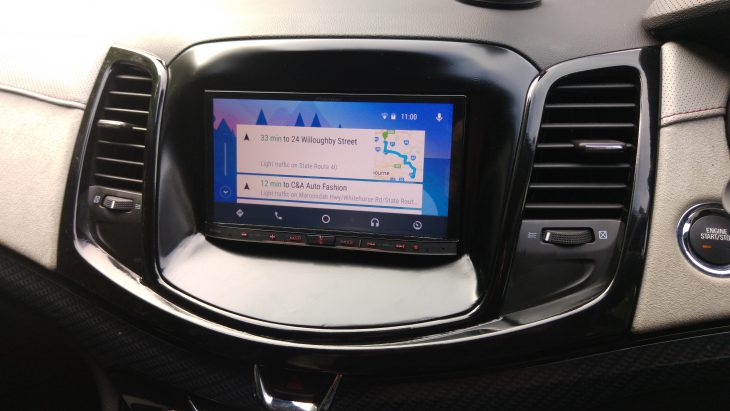
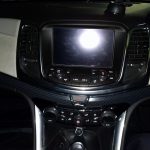

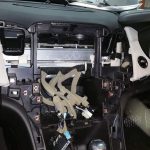
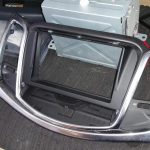
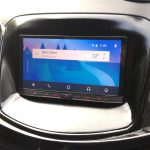

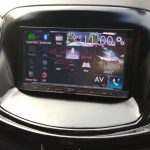

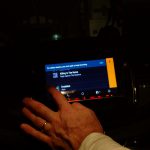


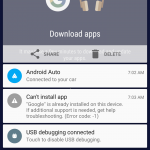
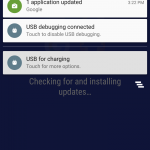

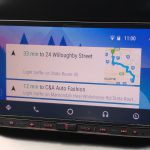
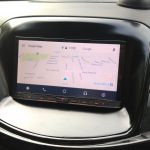

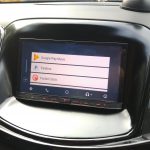
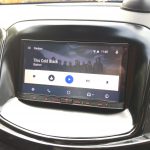




I have this same head unit, and have it it running in my Navara since February. I mostly love it, though recently it’s stopped reading texts to me…it just goes silent. Being able to use Google Maps is pretty much the best thing about it. I love it. Just drove from Brisbane to Melbourne and navigation still works when you’re out of mobile range. I also paid to have this installed and got all my steering wheel buttons integrated as well. So my phone button on my steering wheel triggers the OK Google. One cool little trick I like is… Read more »